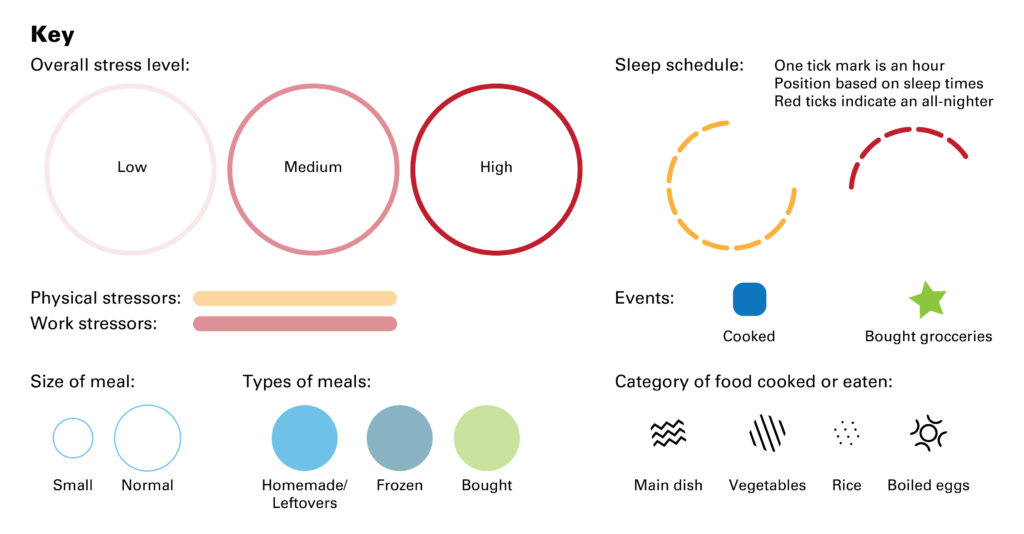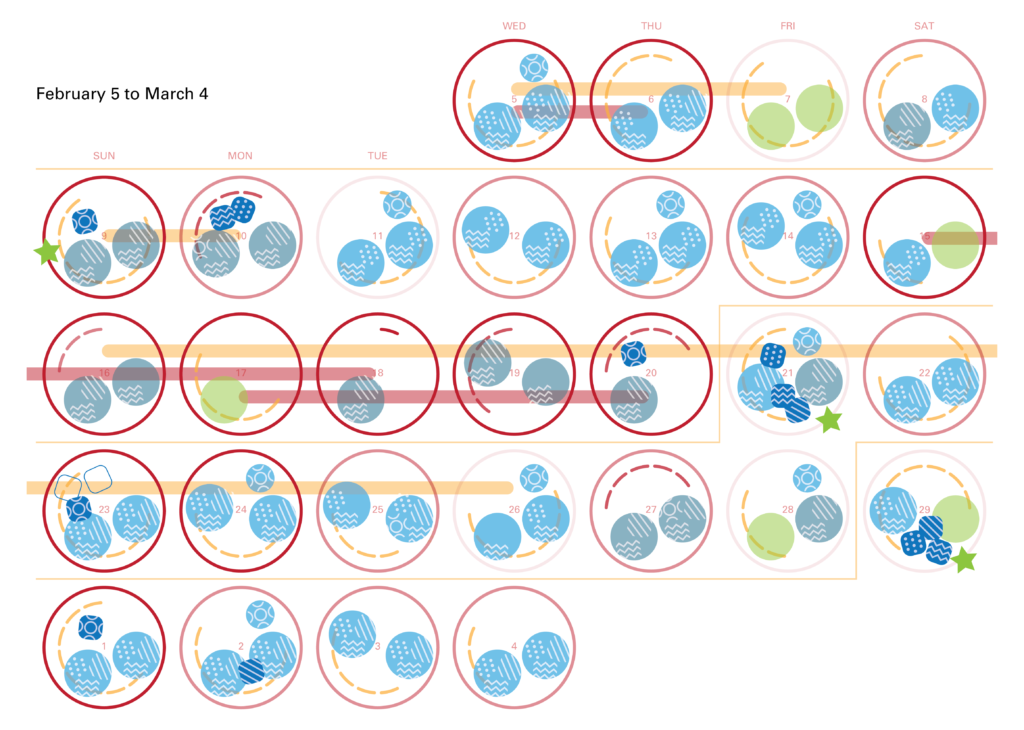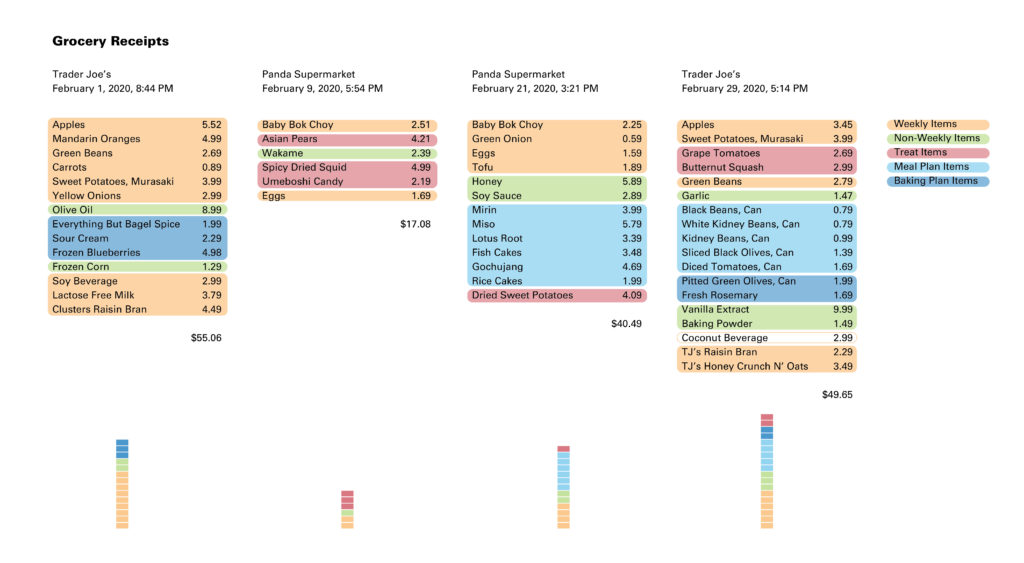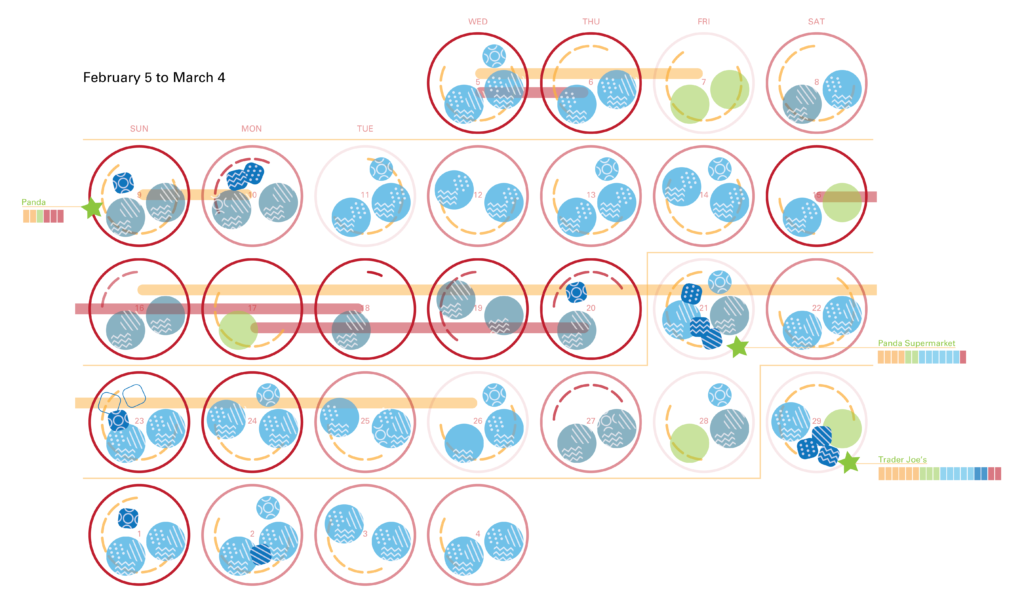Since last year, I’ve lived in apartment-style housing, so I buy groceries and cook each week. Over the past couple of semesters, I’ve noticed that my eating and cooking habits are not very regular, and tend to revolve around my stress levels and workload at the time. For example, I really enjoy baking, and will often use it as a good way to relieve stress. However, if I’m really busy with a project, I tend to forget about food, and will skip meals or eat alot later than usual.
Although I’ve noticed this pattern for a while, I was curious to see if there were more connections and factors in play, regarding some of these more subconscious decisions. Thus, through this project, I wanted to analyze how my own mental and physical well-being play into the choices I made when buying groceries, cooking, and eating.
For about a month, from February 5 to March 4, I roughly kept track of my sleep schedule, my stress levels, what groceries I bought, what I cooked, and when I ate, and visualized that data out in a calendar format below. Each circle, or plate, represents a day, with my meals and related events like cooking or buying groceries mapped out somewhat chronologically, clockwise from the top.


After mapping out the data I had collected, I was initially really surprised by some of the unhealthy habits the calendar showed. Even though I know that I don’t get enough sleep each night, I’m normally not aware of exactly how erratic my sleep schedule is, and how that’s affecting my health. It was really interesting to see that cycle clearly marked out of how stress and projects meant that I was staying up alot later, so I wouldn’t get enough sleep, and in turn, not eat regularly, which then put more stress on my body, helping to repeat the cycle.
In order to go more into the persuasion side of my eating habits, I typed up my grocery store reciepts from throughout the month, and categorized the items I had bought. Since I’m usually really busy during the week, I can’t cook every single day, so I generally make a large batch of a dish on the weekend, which will usually last me for the whole week. Because of this, I always figure out what I’m going to make for the week before going grocery shopping.
For the categories below, weekly items are those that I generally buy really regularly, like fruits, vegetables, and eggs. Non-weekly items are those like oil or garlic, which I still use regularly, but don’t have to buy as often. Treat items are foods that I really enjoy, but tend to not get, because they’re not essential items, and they just add to the amount of money I’m spending on my groceries. Finally, meal plan and baking plan items are those that I buy with a specific dish or recipe in mind.

I found that while the weekly and non-weekly items generally stay the same, the meal plan and baking plan items vary the most from week to week, and are influenced the most by things around me or people I talk to. For example, on February 21st, the meal plan items for that week included ingredients to make tteokbokki, because one of my other friends had mentioned she made it, and I was interested in cooking it myself. Similarly, on the 29th, I bought ingredients for a casserole my mom used to make when I was little, because I was thinking about her and going home for spring break.
After looking at my data and receipts separately, I tried combining them together. I was particularly interested by February 9 on the calendar. My stress level was high as project deadlines were coming up. In addition, right before going to Panda Supermarket, I got a non-anaphylactic allergic reaction to some tree nuts, so I really wasn’t feeling well, as indicated by the yellow bar. Although I only bought six items, half of those I categorized as treat items. To me this just serves as an example of how my mental and physical health play a part in persuading my purchasing decisions. Because I felt miserable, I sought out the snacks and candy I had grown up with, and was able to justify buying them to myself, when normally I would seek out more essential or nutritious ingredients.

Overall, this project served more as a way for me to analyze my own decisions and thinking processes, and to reflect on my health. I tend to get wrapped up in my head and in my projects, and often it’s hard to see the external and internal stressors and forces that are persuading me to act the way I do.